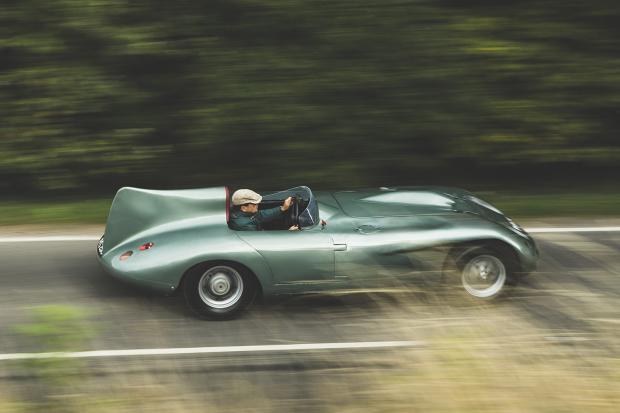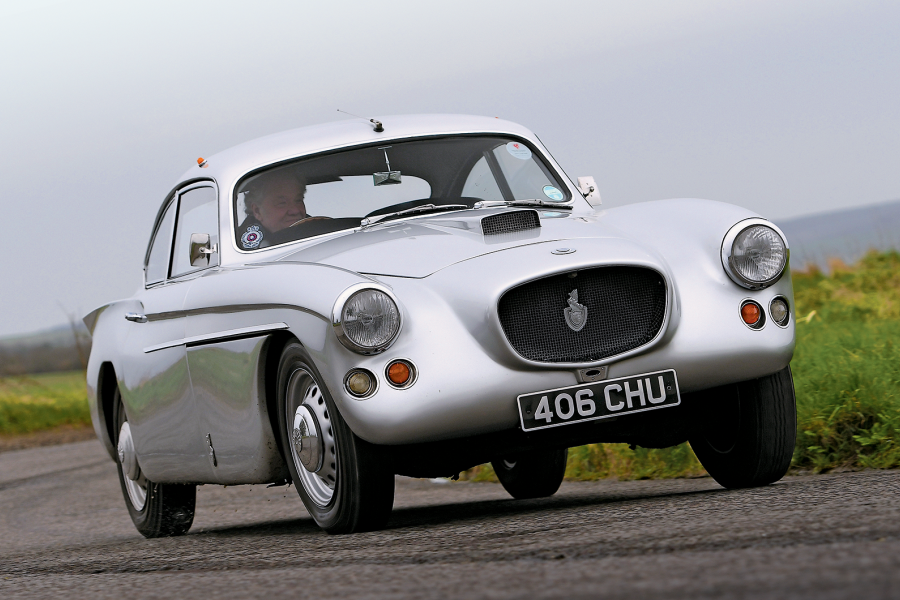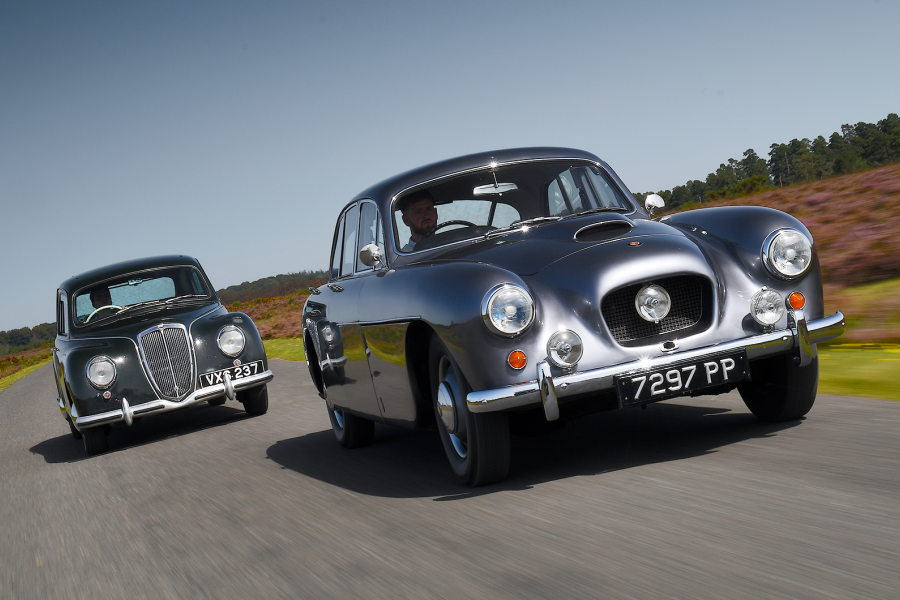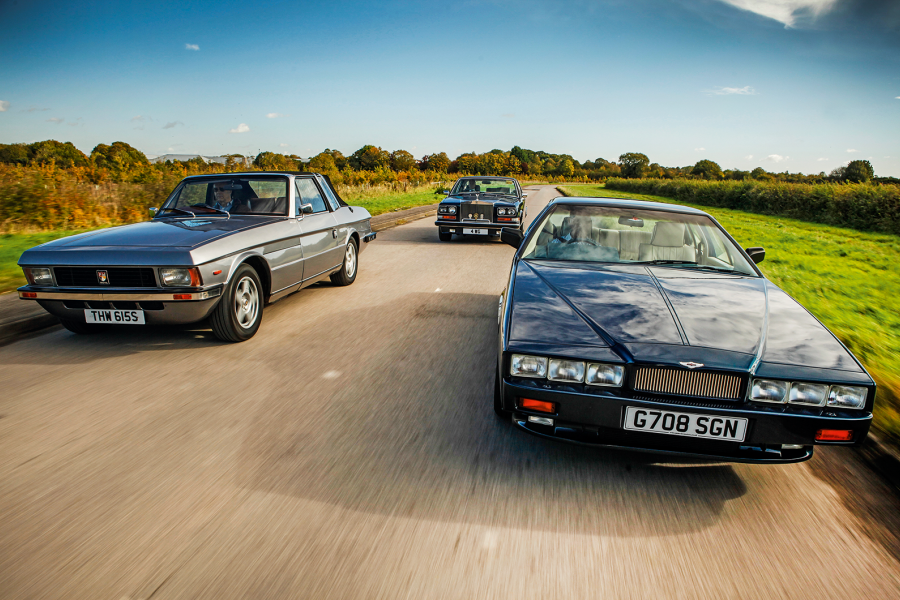The British team generously donated all its winnings to a disaster fund set up for victims of the sport’s worst-ever racing accident.
With the Reims 12 Hours cancelled, Bristol management reviewed its racing involvement and the competition department was closed.
No official statement was made to the press, but the combination of the Le Mans tragedy, Bristol’s challenges in the aviation business after the failure of the Brabazon, and the fact that the three-year-old design had more than proved its reliability and pace led to the team’s demise.
The dark year ended sadly when first Keen, in the Nine Hours at Goodwood, and then Mayers – during the TT at Dundrod – lost their lives.
While Dinky prepared a toy of the coupé for release in 1956 (oddly wearing the number 26, which was never used by a 450), the management decided the fate of the team cars.
For various reasons – Purchase Tax, storage, and fear of Bristol’s reputation being spoiled if the cars got into the wrong hands – the order came to scrap them, with the exception of one roadster. The remains of the ERA G-type were also cut up.
The sole-surviving 450, chassis 11, as driven by Wilson and Mayers, was eventually sold to Anthony Crook, who repainted it in his team’s maroon racing colour and very occasionally brought it out for Bristol Owners’ Club events.
Crook later painted the 450 again, in a non-original, Aston-style metallic green, and in the early ’90s was persuaded to sell it by Bristol aficionado Simon Draper.
The enquiry came about after Crook had spotted a Bristol tax disc on Draper’s Aston Martin DB3S racer at the 1992 Silverstone Historic Festival, and a conversation about the 450 led to the possibility of a sale.
Crook had already removed the original Le Mans engine and fitted it into his Frazer Nash racer, so the 450 deal included a replacement six-port Bristol unit.
After a full mechanical rebuild by Dean Lanzante, the 450 returned to the track for a Silverstone test day in 1993, some 40 years after its debut, in preparation for a race at the Coys Festival.
Frank Synter was among those invited to try the car on the wet day, and the 450’s neutral balance greatly impressed the 1988 British Touring Car Champion.
A cammy engine and tall Le Mans gearing handicapped the very original racer’s potential, but Draper still entered it in the Festival with Aston fanatic Stephen Archer at the wheel. Gaining confidence throughout the race, Archer finished in the midfield after a battle with a Veritas.
Convinced that the 450 was too original and important to again brave the track, Draper had the car made road-legal. “I had the mad idea of taking it on European driving events and even had a passenger seat made, but my wife wasn’t happy about the exposed cockpit,” he laughs.
Rare public outings have included the Sir Jack Brabham tribute at the 2016 Goodwood Revival – ‘Black Jack’ was a reserve driver for 1955 and practised at Le Mans – while more recently the original engine has finally been reunited with the chassis.
“The body and engine are both marked with number four, but we’re still not sure how many were built,” says Draper. “Recent picture discoveries show four in the factory workshop, but some reports suggest five.”
Race engineer Lanzante was also intrigued by the 450’s design. “It’s the 1950s equivalent of the McLaren F1,” he says. “Many of the features are so advanced and all through the car there are special magnesium parts, including the gearbox.”
Having had just two owners over the past 60 years, the 450 is wonderfully original. The styling and details vividly evoke the car’s aviation links and its progressive Le Mans evolution.
The protruding doorhandles of the coupé have gone, so drivers now stretch inside to unlatch the long, lightweight door. With the hinges neatly flush in the wing, entry must have been easy after the sprint across the track at 4 o’clock on 11 June.
Once inside, and settled on the red, quilted-leather cover slung across the frame in the tight space just ahead of the rear axle, the cockpit has a fighter-plane character.
The matt-black dash is dominated by a large Jaeger rev counter, while looking through the Perspex cowl you can just imagine the relief for drivers at finally losing the claustrophobic coupé roof.
It’s still a highly evocative place to sit. You can’t help just grasping the leather-rimmed three-spoke wheel, head pushed back against the padded fairing, and looking down the bonnet, thinking about the dramas that this timewarp sports-racer has encountered.
Frustratingly, no factory records have yet turned up confirming the rest of this car’s race history.
After peaceful reflection high on the Sussex Downs under ominous dark clouds, it’s time to wake that hot 12-port Bristol ‘six’.
Flick the ignition, pull the starter and the busy engine barks into life with a riotous, raucous rasp through the unsilenced system that runs six pipes under the chassis into a single exit ahead of the offside rear arch.
The rich note sounds like an F2 Cooper-Bristol, but with a roof the noise must have been deafening through the 24-hour enduro.
Any apprehensions about the novel transaxle are forgotten with use. The short gearlever sits between the seats and works a hefty linkage back to the conventional H-gate, while a coathanger hook-style lever allows engagement of reverse.
The clutch feels light, and gear selection is short and slick with revs and warm oil. The ratios are closely stacked, the tall top giving 70mph at just 3000rpm.
Stretching the revs between gears, the Bristol’s eager engine response and rorty roar are addictive fun over favourite Sussex B-roads.
As with all tuned Bristols, the power really starts to deliver above 4000rpm. Up to speed, the rack-and-pinion steering is sharp and light, but in contrast the brake pedal initially feels lifeless and heavy.
As the linings warm, the increased feel gives confidence, while those distinctive five-spoke wheels no doubt offer effective cooling.
Within the limits of country roads and respect for this historic car, the handling feels neutral with a bias towards understeer.
Weighing around 700kg, with ideal weight distribution, the performance from the 150bhp straight-six engine is a match for a tuned AC Ace. But on the road you’re never going to meet another 450 – although one Bristol enthusiast is rumoured to be building a replica coupé.
Like all historic racing cars, the roadster doesn’t look quite complete without roundels or numbers – just like a warbird without markings.
Earlier, while examining the car’s precious patina, we unearthed some original bright-green paint in the nose.
Maybe it’s time for a repaint in authentic colours, with the Index of Performance roundels adding the final touch to celebrate its remarkable racing history.
It’s too original to race again at the Le Mans Classic, but were I lucky enough to own this fantastic survivor, I’d relish taking it out at night to evoke its illustrious record.
In the dark, the warmth and noise of that 2-litre ‘six’ would feel even more special. What a magical machine.
Images: Luc Lacey
READ MORE
The enduring charm of the Triumph Spitfire 4
Porsche 911 vs Alpine A110: Rally heroes for the road
Supersonic! Behind the wheel of the LCC Rocket
The unholy trinity: Bugatti Chiron vs Veyron vs EB110
Mick Walsh
Mick Walsh is Classic & Sports Car’s International Editor





